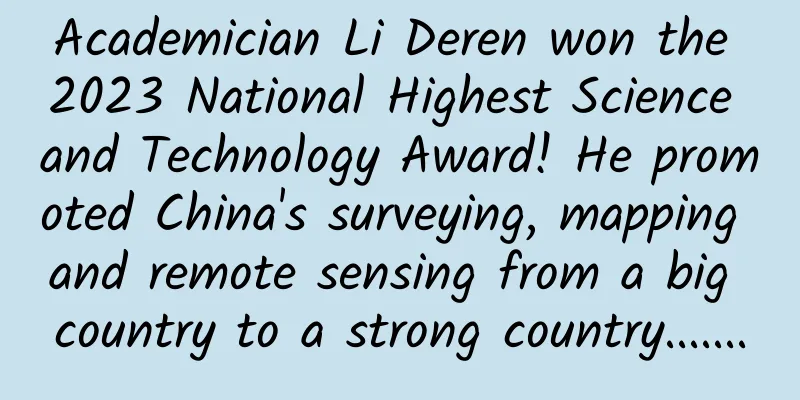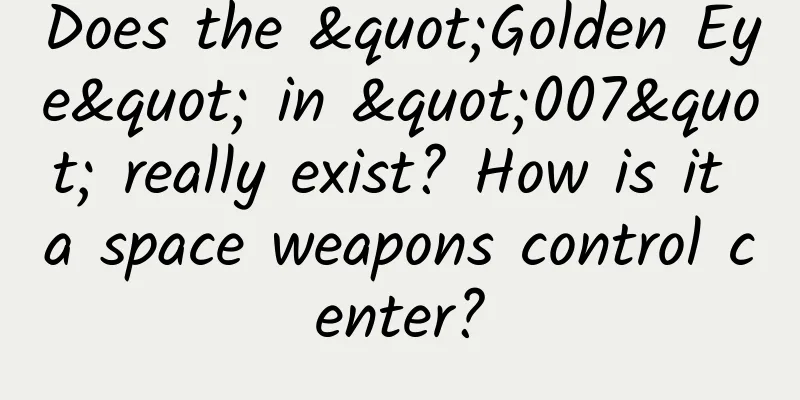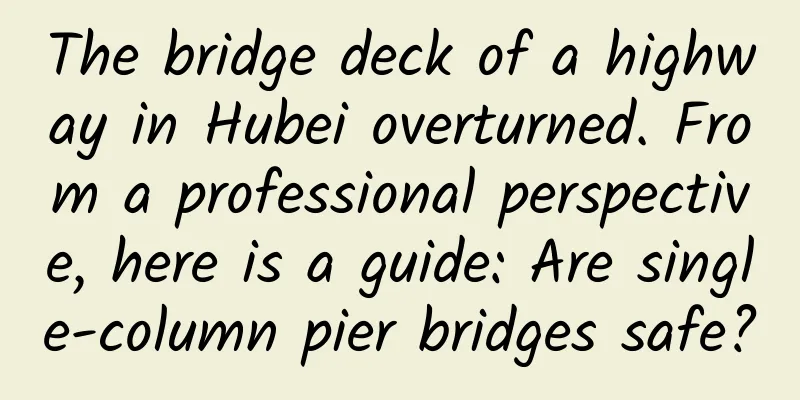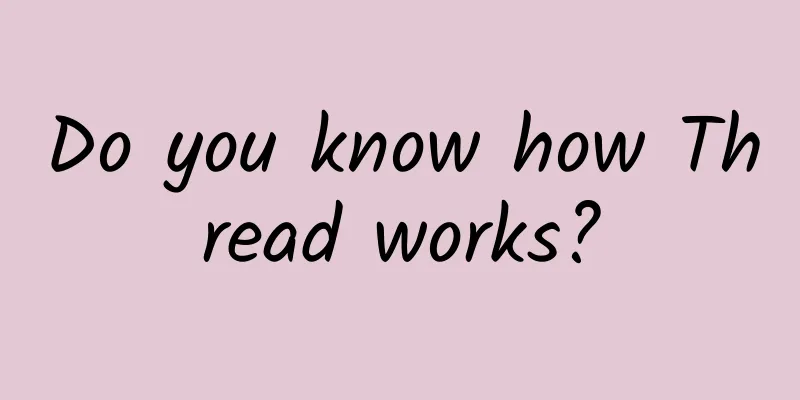Academician Li Deren won the 2023 National Highest Science and Technology Award! He promoted China's surveying, mapping and remote sensing from a big country to a strong country.......

|
On June 24, 2024, the 2023 National Highest Science and Technology Award was announced. Academician Li Deren of Wuhan University won this honor for his outstanding contributions in the field of geographic information science. As an internationally renowned surveying and remote sensing scientist, Academician Li Deren has devoted nearly 40 years of scientific research career to improving my country's remote sensing earth observation capabilities, and has made outstanding contributions to my country's transformation from a major surveying and remote sensing country to a strong surveying and remote sensing country. Let's take a look at the main scientific research achievements of this geographic information science master. Newcomers: Solving the century-old problem of surveying In 1982, while studying at the University of Bonn in Germany, Academician Li Deren pioneered the weighted iteration method for deriving gross error location from the posterior variance estimate. This method is called the "Li Deren method" in the measurement community . Later, when he was studying for his doctorate at the University of Stuttgart, he created the theory of error distinguishability and the method of detecting systematic errors and gross errors, solving a century-old problem in surveying. This achievement earned him the highest score in the history of doctoral dissertations at the University of Stuttgart and won him the 1988 "Lufthansa Aviation Surveying Award". So, how do we understand the "Li Deren Method" in a popular way? Imagine you are trying to assemble a large puzzle. This puzzle has thousands of pieces, representing a large number of measurements taken from satellites or aircraft. Your task is to put these puzzle pieces together accurately to form a complete image of the earth's surface. Sounds simple, right? But here comes the problem: some puzzle pieces may have been secretly moved by naughty children at home (this is "gross error"), some may be slightly deformed due to minor problems in the production process (this is "systematic error"), and some may be slightly deviated from the correct position for various reasons (this is "random error"). Now, you have to find and correct these errors without knowing which puzzle pieces are wrong, and at the same time complete the puzzle as accurately as possible. This is the problem that surveyors have faced for a long time. Li Deren's method is like an intelligent assistant, helping you solve this complex problem step by step: First, it takes a quick look at all the puzzle pieces to identify those that are obviously out of place (gross error detection). Then, it carefully examines each puzzle piece to see if there are slight deformations or systematic deviations (systematic error identification). Next, it mathematically calculates where each piece should go, taking into account the relationships between all the puzzle pieces (optimal estimate). Finally, it repeats this process, becoming more precise each time, until it finds the best puzzle solution. The uniqueness of Li Deren's method is that it can handle these different types of errors at the same time and can continuously improve accuracy in the process. It is like a super player who can not only correct errors in the puzzle, but also gradually see the whole picture in the process of puzzle. In the real world, it helps scientists extract accurate geographic information from massive measurement data, providing a powerful tool for drawing accurate maps, monitoring earth changes, and so on. Returning to China after completing studies: Leading remote sensing technology to catch up with the world level After returning to China, Academician Li Deren accelerated his research and led his team to continue to carry out basic theories and major technological innovations. In 1991, he proposed the "3S integration" (GNSS global satellite positioning system, RS remote sensing, GIS geographic information system) theory, which was internationally recognized. The modern remote sensing geographic system composed of 3S integration has also helped mankind achieve a historical leap in the integrated information-based mobile measurement of the sky and the ground. Next, we will give a brief introduction to these technologies. Imagine that you have a pair of "super eyes" that can zoom in and out at will, penetrate clouds, and even see through the surface of the earth. These eyes can not only see every detail of the earth's surface, but also know their exact locations and analyze their changes in real time. This is the magic of the modern remote sensing geographic system. The system is mainly composed of three parts, just like the three super powers of a superman: Remote sensing (RS) is like Superman’s “eyes”. Sensors on satellites, aircraft, and even drones allow us to obtain images and data about the Earth’s surface from high above. These “eyes” can see visible light, infrared light, and even radar waves. They can penetrate clouds, work at night, and even “see” beneath the Earth’s surface. DMSP satellite, whose OLS sensor can detect the distribution of night lights (Image source: Wikipedia) The Global Navigation Satellite System (GNSS) is like Superman's "locator". Through GPS, BeiDou and other satellite positioning systems, we can accurately know the location of any point on the earth. Its performance is so precise that it can even measure the slightest movement of the earth's crust. The ground track map of the BeiDou-M5 satellite (2012-050A), the white dots are its positions at a certain time, and the area surrounded by the white lines is its service range at that location. (Image source: Wikipedia) Geographic Information System (GIS) is like Superman’s “high-powered brain”. It can store, analyze and visualize the massive amounts of data obtained from “clairvoyance” and “locator”, and transform complex geographic information into maps or 3D models that are easy for us to understand. Classic example of GIS: John Snow's 1855 map showing clusters of cases during the 1854 London cholera epidemic. (Image source: Wikipedia) These three "superpowers" combined form the modern remote sensing geographic system. It allows us to observe and understand our planet in all directions, from multiple angles and with high precision. For example, when a natural disaster occurs, this system can quickly provide detailed information about the disaster area, helping rescue teams to carry out their work more effectively. In urban planning, it can provide detailed terrain, building and population distribution data to help planners make more informed decisions. For agriculture, it can monitor crop growth, predict yields, and even guide precise fertilization. With the development of technology, modern remote sensing geographic systems are becoming more and more intelligent. With the addition of artificial intelligence, it can not only "see" but also "understand" what it "sees". In the future, it may become a real "Earth Brain" to help us better understand and protect our home. In 2003, Academician Li Deren, as the leader, proposed to the country to "build a high-resolution earth observation system in my country", which became one of the country's 16 major scientific and technological projects. In the following 15 years, he led the team to complete system demonstration, technical research, system development and major applications, promoting my country's high-resolution earth observation system from scratch to excellence. The upper part is passive remote sensing, represented by visible light remote sensing, which passively receives electromagnetic waves emitted or reflected by ground objects; the lower part is active remote sensing, represented by microwave remote sensing, which actively emits electromagnetic waves and receives reflected signals (Image source: Wikipedia) Aim high: Polishing China's "Eastern Eyes" In order to further improve the level of remote sensing technology in my country, Academician Li Deren led the team to carry out key technology research on the integrated space-based information real-time service system (PNTRC) of "communication, navigation and remote sensing", launched the Luojia series of scientific experimental satellite projects, and successfully developed and launched 4 Luojia series satellites. More forward-looking is that Academician Li Deren promoted the construction of the "Eastern Wisdom Eye" intelligent remote sensing constellation plan . In April 2022, the first phase of the "Eastern Wisdom Eye" intelligent remote sensing constellation project was officially launched. On February 3, 2024, the Oriental Wisdom Eye High Resolution 01 satellite, developed by Li Deren as the chief scientist, was successfully launched and realized commercial operation. This marks that China has made significant progress in the integrated intelligent remote sensing satellite system of "communication, navigation and remote sensing". The "Eastern Wisdom Eye High Resolution 01 Satellite" (also known as "Yantai-2") was successfully launched into orbit in the Yangjiang waters of Guangdong Province, my country by the Jielong-3 Yao-3 carrier rocket (Photo source: Wuhan University News Network) Conclusion From solving the century-old problem of surveying to leading China's remote sensing technology to catch up with the world level; from promoting the "Eastern Eye" intelligent remote sensing constellation plan to cultivating a new generation of surveying and remote sensing talents, Academician Li Deren has promoted the leapfrog development of China's surveying and remote sensing with his wisdom and sweat. His scientific research experience not only shows the persistent pursuit of an outstanding scientist, but also demonstrates the lofty spirit of Chinese scientific and technological workers to climb to the top and serve the country. As he said, "Science is to serve the motherland." This spirit will continue to inspire more Chinese scientists to contribute to building a strong country in science and technology. Planning and production Source: Science Popularization China Author: Guo Fei, Yantai University Producer丨China Science Expo Editor: Yinuo Proofread by Xu Lailinlin |
>>: Does “cancer constitution” really exist?
Recommend
Next-generation console competition: Chinese version of XBOX ONE and PS4 comparison
After Microsoft's XBOX ONE entered China on S...
User pyramid model: Zhihu promotion case analysis
As the proposer of the user pyramid model, Lei Le...
The "little secrets" of mobile phones that manufacturers are unwilling to tell, laymen cannot understand, and only insiders know
Regarding smartphones, many years ago, Brother Ka...
How to master offline marketing?
When we do offline marketing , the actual flash s...
Two key factors in user operation growth and customer acquisition!
Customer acquisition is the basis for evaluating ...
The ninth episode of the Aiti Tribe Clinic: Java, Python, PHP, they all say they are simple
【51CTO.com original article】 Activity description...
Comparison of the five major smartphone systems to see which one is stronger
Smartphones are mobile phones with more powerful ...
Do glaciers also have a butterfly effect? From "violent transportation" to "gentle nourishment"
This is a story about "Sumeru" and &quo...
Promotion and data analysis: one article gives you a comprehensive view of the new media landscape
This article is quite long, and it more or less c...
4 strategies + 7 tips, a comprehensive interpretation of Xiaohongshu promotion strategy!
If you ask me which platform users enjoy watching...
The emergence of the three-fold foldable device will bring about a new era for mobile terminals
Import: The technical deep waters of folding scre...
What did Shenzhou 15 do during its first extravehicular activity?
According to the China Manned Space Engineering O...
Education Industry Advertising Creative Optimization Guide
Recently, many provinces have announced the time ...
Wu Bangzhu's "Authentic Hitting the Board" Ningbo Hot Money Direct Line, a trick to hit the board that everyone can learn
Contents: 1. Why do I say that the first board is...
June 2022 "Science" Rumors List: Only children get chickenpox? Will this summer be cold?
This is Beijing Association for Science and Techn...









